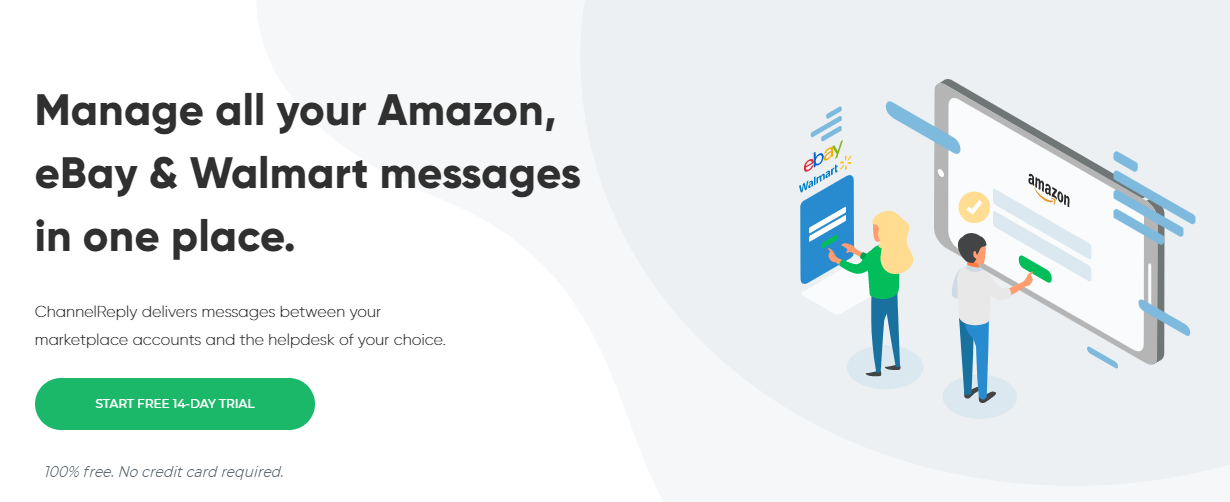
This article is a guest post by Jock Purtle of Digital Exits.
The ecommerce business model is growing every day. To demonstrate the scale, in 2016, Amazon reported a network market of 310 million active worldwide customers. Retailers that team up with marketplaces such as Amazon or eBay feel good about this trend.
Of course, there's more to being successful in the ecommerce world than setting up an online shop and waiting for the cash to roll in. Today's brands need to be strategic, patient and innovative if they want to stay ahead of the competition.
Business value is something important to pay attention to. Valuable businesses are good businesses to own. And if you ever decide you want to move on, building equity in your company will make it easier to walk away and start something new.
Here are a few effective strategies for boosting the value of your ecommerce business:
#1 Switch from Mobile Ready to M-commerce Optimized

The growth of mobile browsing is unstoppable. Right now, it's more common to buy products from your phone than a computer.
This change forces ecommerce site owners to re-think their strategy for engaging customers online. Though choosing a responsive website design is a good start, there are additional steps you'll need to take to improve user experience on mobile devices.
Make use of the best mobile payment processing tools, such as the ones found here. Also, be sure to constantly upgrade the design of your mobile checkout process. And no matter what, work to make every step of your buyer funnel optimized for mobile.
Taking these steps will help you reach new customers, expand revenue and increase the value of your ecommerce business.
#2 Invest in Powerful Ecommerce Tools
As the marketplace grows more competitive, staying ahead of the game with ecommerce isn't always easy. The good news is that there are tools out to help you improve efficiency, enhance the customer experience and earn more sales.
For example, ChannelReply integrates Amazon, eBay and Walmart messaging with your preferred helpdesk so you can offer seamless and efficient customer service.
You can also look at things like email automation so you can send personalized messages to each customer depending on where they are in their buyer journey. MailChimp is a trusted resource for this.
In a world where your customers expect the royal treatment and meaningful interactions from their favorite brands, setting your business up with the right tools so you can focus on delivering this is critical.
#3 Work on Your Website Traffic

Traffic is one of the most valuable metrics you have for assessing the success of your online company. When someone evaluates your ecommerce business, they’re going to want to see your traffic numbers. This will let them know more about what to expect when they take over the business.
The first step in this is installing Google Analytics to track your visitors. It’s important to know who is already coming to your site and how they’re getting there so you can build on already-successful strategies.
But from there, you’ll want to develop some strategies for bringing in new traffic. Perhaps you need an SEO strategy so more people will find you though organic search. Or it’s possible social media may be more effective for you. It could also be that you simply need to ramp up your current efforts so your marketing messages resonate more strongly.
No matter which way you go, analyzing your traffic numbers will make you more successful.
#4 Boost Engagement with Long-Form Content

An engaged lead has the potential to become a valuable conversion. There are many ways you can advertise your business to recruit prospects, but one of the most effective is content marketing.
Highly visual content full of in-depth, useful information is an effective way to prove to your audience you’re knowledgeable and trustworthy. When you combine this with lots of relevant products on your customers' preferred marketplaces, you improve your chances of making a sale.
To get to this point, you need to ask yourself some questions, such as:
- What do I want my customers to know about my company other than its products? Your brand stems from this, so make sure you’re producing content relevant to both your audience and your branding objectives.
- What do I do that’s different and will capture people’s attention? There’s a lot of noise out there. You need to be unique and work hard to draw people towards what you have to say.
- What action do I want to encourage as a result of each piece of content? Not every piece is about sales. Sometimes you’re just looking to inform, other times to explain, and often just to engage or connect. Be clear from the beginning what you plan to accomplish so content will be created for the right purpose.
#5 Plug the Gaps in Your Buyer Funnel

Revenue is a key driver of website value. While finding new revenue streams is always important, plugging leaks in your current ones needs to be a focus as well.
Slow or non-existent responses can turn loyal customers away. And confusing checkout processes will quickly send people looking.
Google Analytics will help you determine where some of the leaks are. Look at numbers such as time on page and bounce rate. Both will tell you how well you’re doing at holding audience attention until your calls to action.
But from there you’ll need to dig a little deeper. Are your issues a problem with content? Or are you simply bringing the wrong people to your site?
If people are leaving comments, sharing your content or reaching out to you, you can take that as a sign you’re on message. Yet if this is not leading to conversions, you’ve likely created content that doesn’t align with where your readers are in the sales funnel.
Getting crickets from your content suggests your outreach efforts are falling on the wrong ears. Go back to your market research and try to identify where you’ve gone wrong. You may need to pause some efforts until you know better how to make them succeed.
Split tests, or A/B tests, are great for this. They will help you figure out what works with your audience and what doesn’t. In turn, that will help make sure you’re spending your time and money on creating content that will actually work.
Shoring up this part of your business will help boost revenues and increase value.
#6 Explore New Territories

Growth and evolution are important characteristics of a valuable ecommerce business. The bigger you grow, the more money you'll earn, making you more attractive to investors. But remember, just because you started selling your products exclusively on eBay (for example) doesn't mean you must stick to that strategy forever.
Businesses that show they can adapt to a changing business landscape are more valuable. They demonstrate more effective management. But more importantly, they minimize the fear a business is too dependent on one revenue stream; no one wants to buy a business one market shift or trade tariff away from being irrelevant. It’s just one more reason why multi-channel selling matters so much.
As things progress, immediately start looking for new growth opportunities. Take your time, and be reasonable. But don’t fall into the trap of being too comfortable. This will put your and your business’s livelihood at unnecessary risk.
#7 Take Advantage of Your Best Products

Most ecommerce companies sell multiple products. But not every product is the same. According to Pareto's law, around 80 percent of your profits probably come from only 20 percent of your products. Making sure you’re getting the most out of your best products is key to building a valuable business.
Doing this will require constant evaluation. Always watch for the products bringing in the most money. When you spot one, work on finding new ways to tap into its success.
For instance, if you sell a set of makeup brushes your customers love, what could you do to leverage this success? Could you introduce different colors or styles? Maybe you could combine different brushes into a package deal? Think outside the box and help your top performers help you even more.
Make Your Ecommerce Venture More Valuable

Your venture is either growing or stagnating. To keep growing and generating value, it's important to evaluate your strategies, keep track of what your customers want and make the most out of your products.
While the strategies above aren't the only ways you can improve your ecommerce strategy, they should give you a starting point. Then when you do decide to sell, you’ll be in a much better position to reap the benefits of all the hard work it took to build your business.
About the Author
Jock is an online business broker who specializes in the buying/selling and appraisal of online businesses. He’s been involved with this in some capacity since he started his first company at just 19 years old. Since then, he’s been able to enjoy the benefits of a free and flexible work life, and he writes frequently about his experiences to help others looking for something similar. His work has been featured in publications such as CNBC, Forbes, Business Insider and Entrepreneur.





